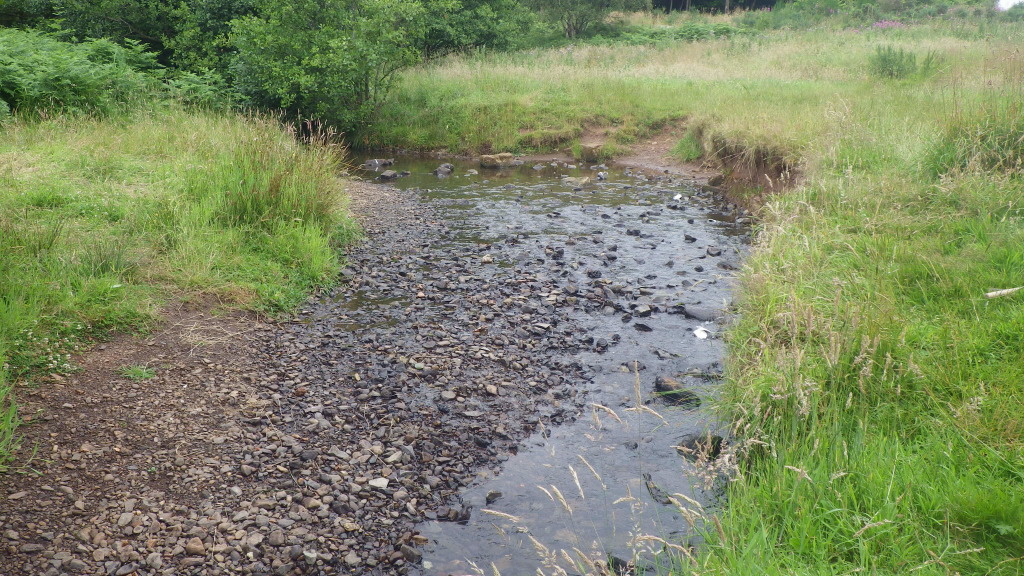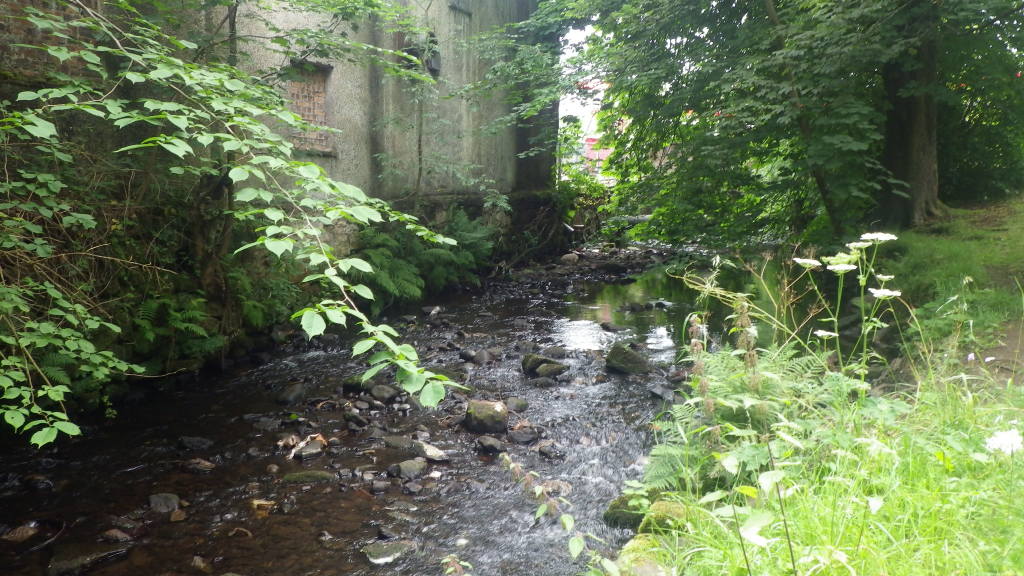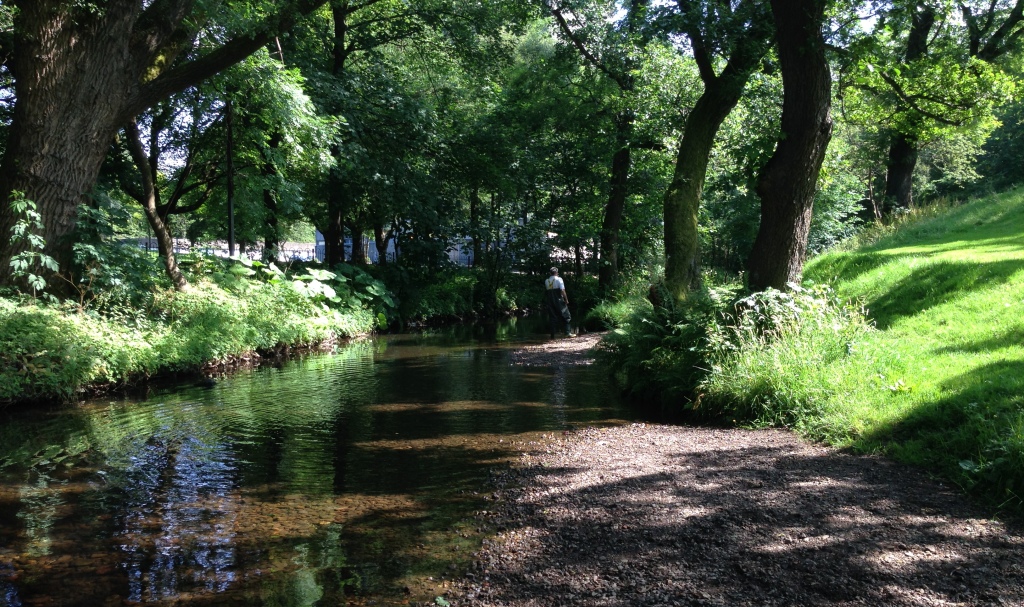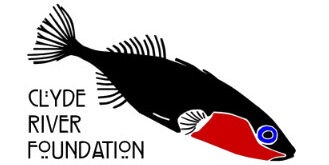The Duntocher Burn
The Duntocher Burn rises among the Kilpatrick Hills from the Cochno burn and other headwaters, and collects in Duntocher before running 2¼ miles south-westward to the River Clyde. Along the stretch of the burn it may be known as the Cochno, Duntocher or Dalmuir Burn.
The burn is a very important part of the area’s history. The villages of Hardgate, Duntocher and Faifley are thought to have began as farming communities along the line of the Roman Wall. In the late 18th and the 19th century, using water-power from the Cochno and Humphrey burns, the area developed a textile industry which by 1835 employed more than 1400 people in 4 mills. An unfortunate side-effect of industrialisation throughout the River Clyde catchment was the pollution of waterways. This resulted in the extinction of our most iconic species of fish, the Atlantic salmon. Today the water is much cleaner and salmon have returned to many areas throughout the catchment. This year we electro-fished the Dalmuir Burn near where it enters the Clyde and we were delighted to find many young salmon. It is hoped that Flying Fish will shine a new light on the burn’s natural history and inspire pupils to take an interest and care for their local river.
For Flying Fish we visited the Cochno Burn at Edinbarnet, the Duntocher Burn in Goldenhill Park and the Dalmuir Burn in Dalmuir Park.



